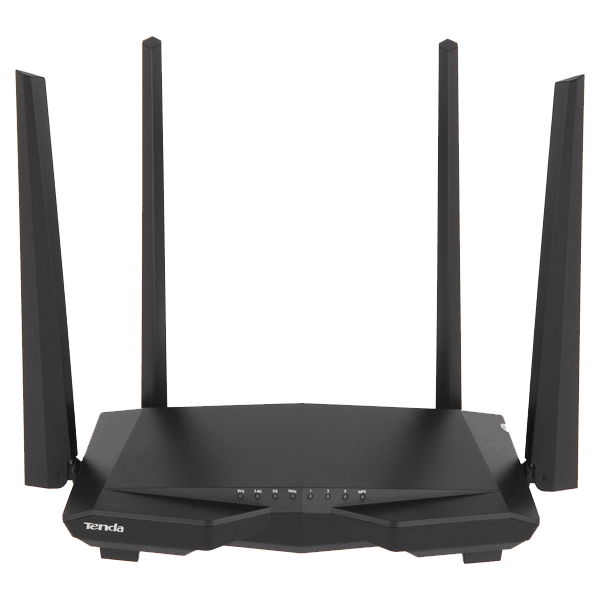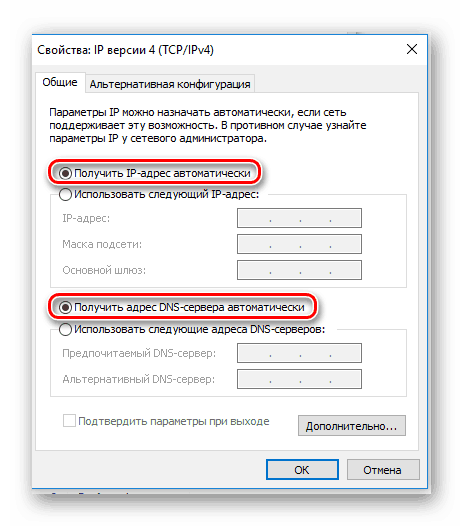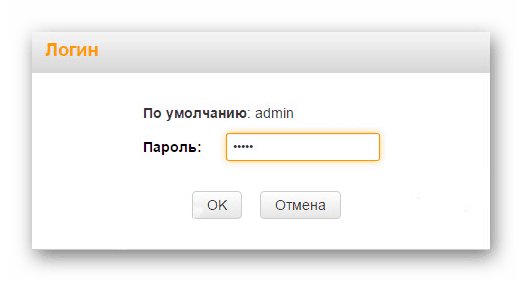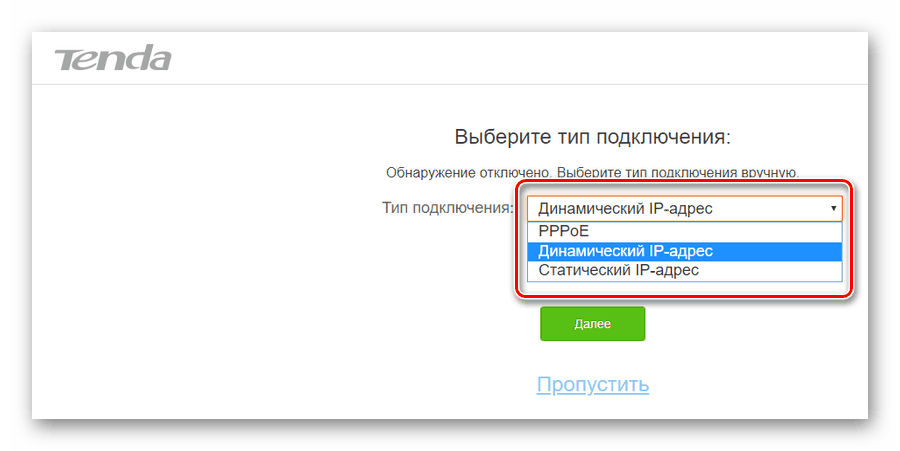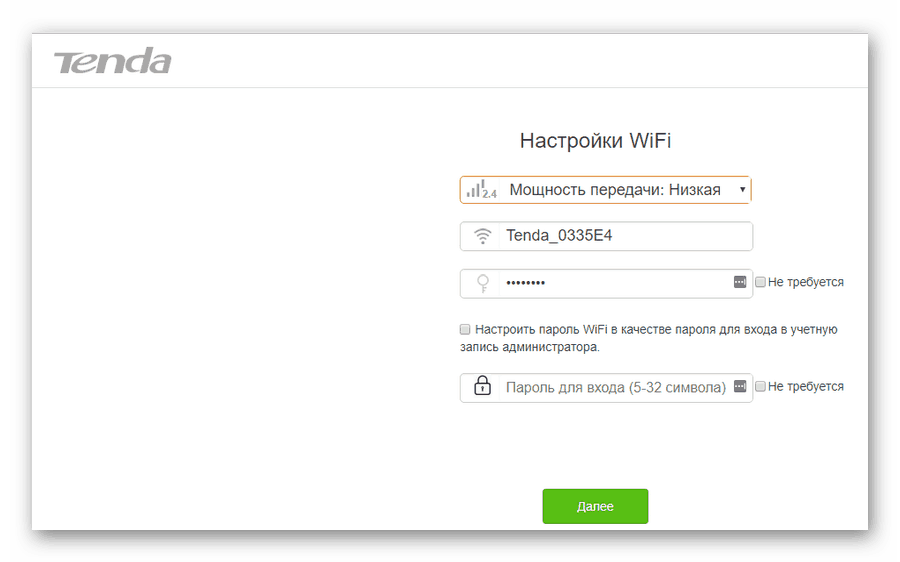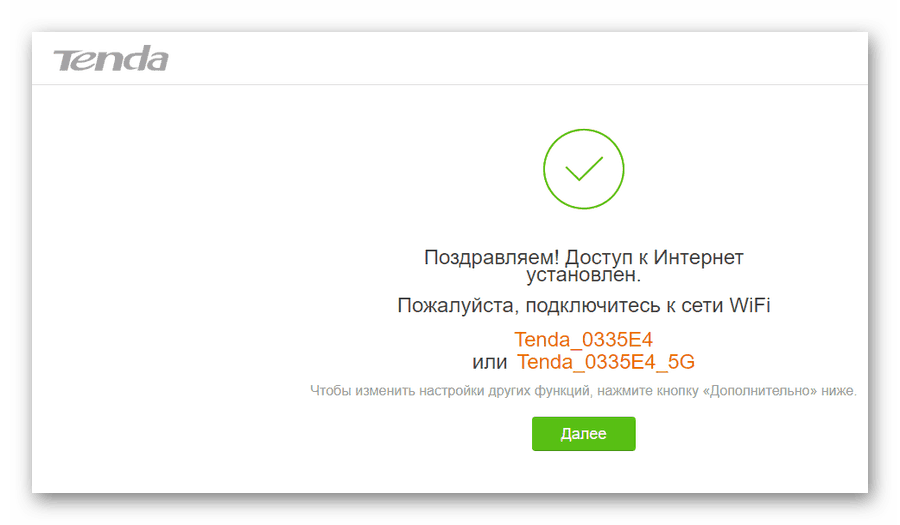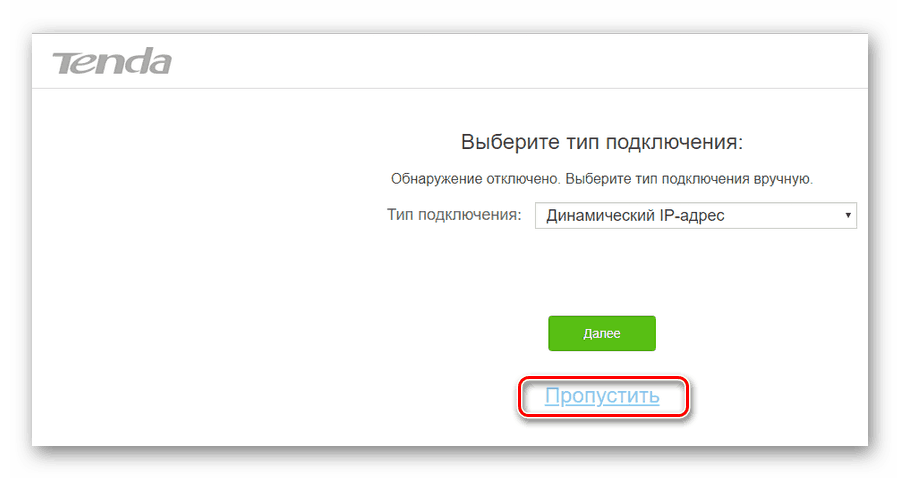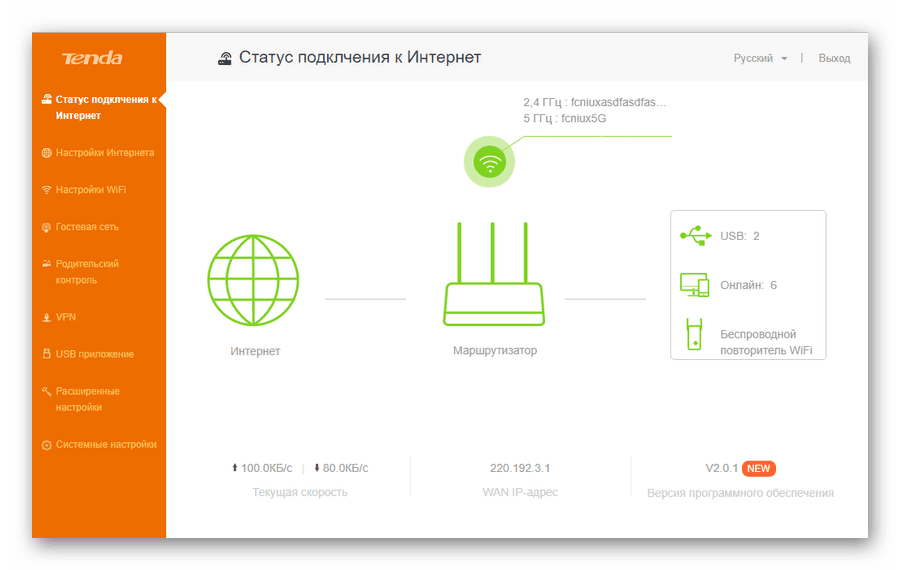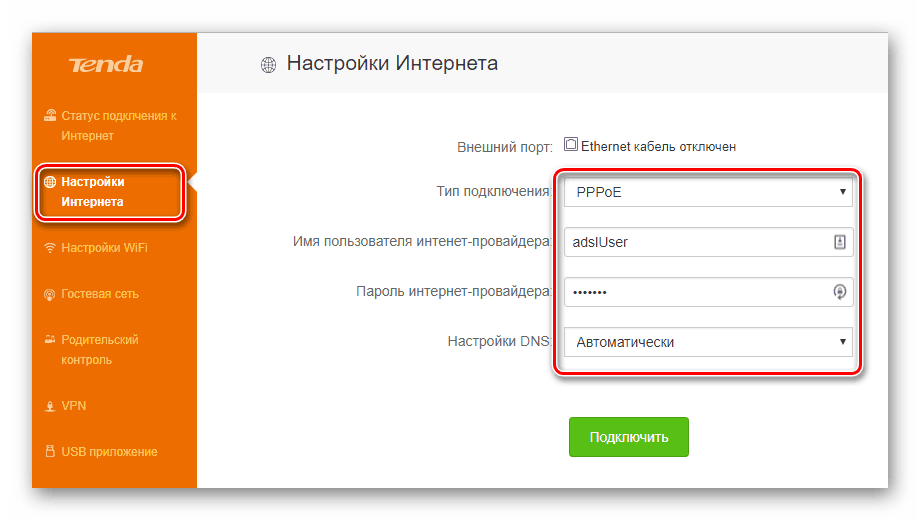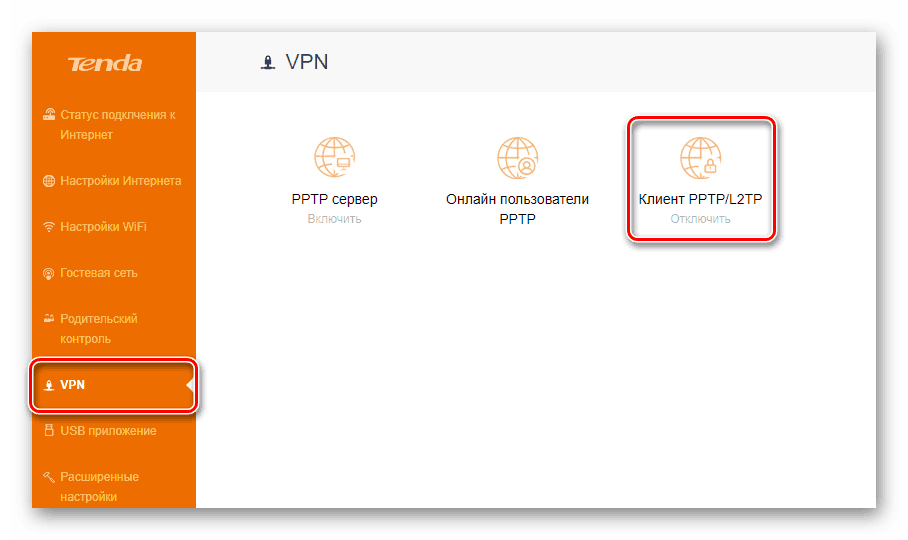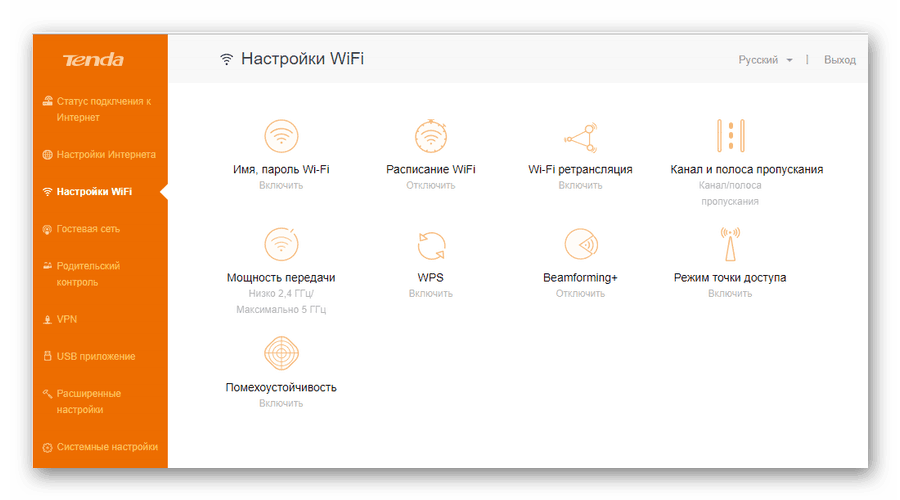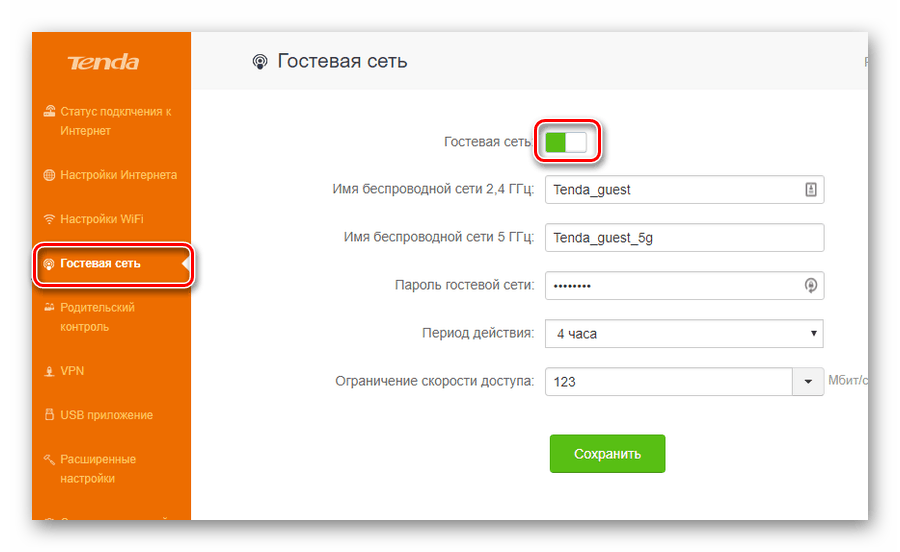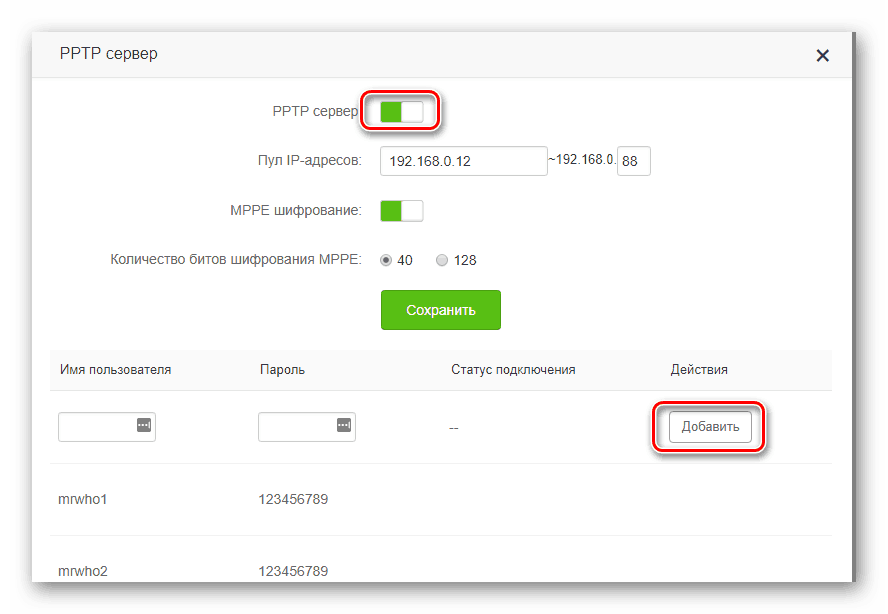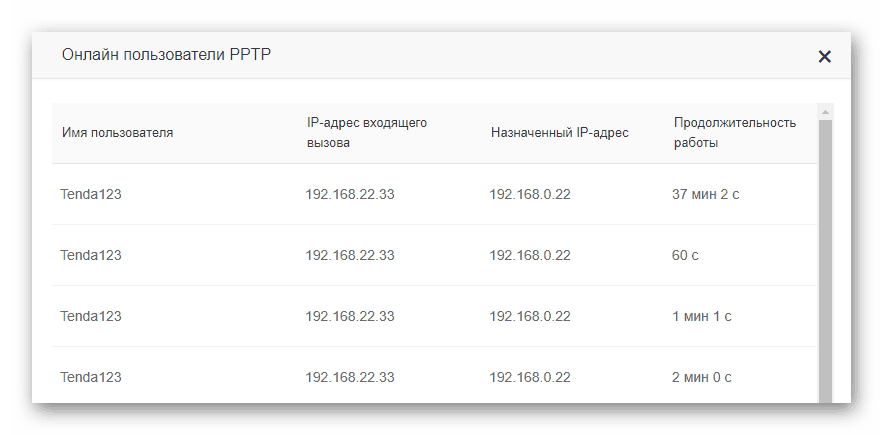Руководство по установке трехдиапазонной Mesh WiFi-системы Tenda MW12 AC2100 для всего дома
Содержимое пакета
- Сетка 12 x 3
- Адаптер питания x 3
- Кабель Ethernet x 1
- Руководство по быстрой установке x 1
Познакомьтесь со своим устройством
Загрузите и установите приложение Tenda WiFi
Скачать Wi-Fi магазин App на своем мобильном устройстве, выполнив поиск Wi-Fi магазин в App Store/Google Play или путем сканирования QR-кода. Затем установите приложение.
Доступно для iOS и Android (или)
Подключите основной узел
- Первый настроенный вами узел функционирует как первичный узел, а остальные называются вторичными узлами.
- Выключите модем и извлеките из него аккумулятор (если есть).
- Используйте прилагаемый кабель Ethernet для подключения порта LAN вашего модема или разъема Ethernet к порту (WAN/LAN) любого узла. Этот узел является вашим основным узлом.
- Установите аккумулятор в модем и включите его.
- . Используйте прилагаемый адаптер питания для подключения основного узла к источнику питания. Его светодиодный индикатор горит зеленым цветом. Подождите около 40 секунд. Система завершает запуск, когда светодиодный индикатор мигает зеленым цветом.
Настройте основной узел для доступа в Интернет
- Зайдите в список сетей Wi-Fi на своем мобильном устройстве; выберите SSID первичного узла и введите его пароль. SSID и пароль по умолчанию указаны на нижней этикетке любого узла.
- Запустите Wi-Fi магазин App и следуйте инструкциям на экране, чтобы настроить основной узел. После того, как основной узел подключен к Интернету, его светодиодный индикатор загорится зеленым.
Подключите вторичные узлы к Интернету
- Разместите каждый узел:
- n возвышенное, открытое место в зоне покрытия существующей сети nova WiFi.
- Держите узлы подальше от электроники с сильными помехами, такой как микроволновая печь, индукционная плита и холодильник.
- Используйте другие адаптеры питания, чтобы подключить оставшиеся вторичные узлы к отдельным источникам питания, и их индикаторы горят зеленым светом. Подождите около 40 секунд. Вторичный узел подключается к другому узлу, когда его светодиодный индикатор мигает зеленым.
- Наблюдайте за светодиодными индикаторами вторичных узлов, пока их светодиодные индикаторы не загорятся одним из следующих цветов:
- Если светодиодный индикатор узла не горит зеленым светом, переместите его в соответствии с шагом 1 in IV чтобы получить лучшее соединение.
Готово
- Для доступа в Интернет с помощью:
- Проводные устройства: подключайте проводные устройства к портам LAN любого узла.
- Беспроводные устройства: подключите беспроводные устройства к сети Wi-Fi, используя SSID и пароль Wi-Fi, который вы установили.
- Если вы хотите управлять сетью в любое время и в любом месте, коснитесь
и используйте свою учетную запись для входа.
FAQ
Q1: Как я могу изменить свой SSID и пароль?
A1: Запустите Wi-Fi магазин App, коснитесь «Настройки» в правом нижнем углу, коснитесь Беспроводной сети Настройки, измените свой SSID и пароль и коснитесь Save.. Затем вам необходимо повторно подключить свои мобильные устройства, используя новый SSID и пароль.
Q2: Как я могу удалить узел из моей сети Wi-Fi?
A2: коснитесь узла на Wi-Fi магазин App, нажмите «…» в правом верхнем углу и выберите «Удалить».
Примечание: Удаление операции восстанавливает заводские настройки узла
Q3: Могу ли я добавить еще один новый набор узлов, чтобы расширить зону покрытия моей сети?
A3: Да. Запустить Wi-Fi магазин App, коснитесь «Настройки» в правом нижнем углу, коснитесь Добавить Новая звездаи следуйте инструкциям на экране, чтобы добавить
В4: Как восстановить заводские настройки сети?
A4: Когда узлы включены, удерживайте кнопку сброса основного узла с помощью скрепки в течение примерно 6 секунд, отпустите, когда светодиодный индикатор начнет быстро мигать. Ваша сеть успешно перезагружена, когда светодиодный индикатор горит непрерывно, а затем снова мигает. И все узлы восстановлены до заводских настроек
В5: Мои устройства с поддержкой Wi-Fi 2.4 ГГц, такие как домашняя камера безопасности, не могут подключиться к моей сети nova WiFi. Что я должен делать?
A5:
- Если ваше устройство с поддержкой WiFi 2.4 ГГц поддерживает функцию WPS, выполните
шаги ниже:
Шаг 1 Запустите приложение Tenda WiFi, нажмите «Настройки», «WPS» и кнопку «WPS», соответствующую узлу рядом с вашим устройством.
Шаг 2 В течение 2 минут включите функцию WPS на вашем устройстве. - Если ваше устройство с поддержкой WiFi 2.4 ГГц НЕ поддерживает функцию WPS, выполните следующие действия:
Шаг 1 Подключите свой смартфон, используемый для настройки, к сети Wi-Fi.
Шаг 2 Запустите приложение Tenda WiFi, нажмите «Настройки», «Умный помощник» и «Включить». Ваш смартфон подключается к сети Wi-Fi 2.4 ГГц. Шаг 3. С помощью смартфона настройте устройство с поддержкой Wi-Fi 2.4 ГГц с помощью его приложения.
Описание светодиодного индикатора
После включения узла светодиодный индикатор горит зеленым светом около 40 секунд для завершения запуска. Затем светодиодный индикатор загорится одним из следующих цветов:
| Тип узла | Статус | Описание |
| Первичный узел | Быстро мигает зеленым | Подключение к Интернету |
| Горит зеленым | Подключен к интернету | |
| Горит красным | Отключенные | |
| Вторичный узел | Медленно мигает зеленым | Дождитесь подключения к другому узлу или поиска другого узла |
| Быстро мигает зеленым | Подключение к Интернету | |
| Горит зеленым | Хорошая связь | |
| Сплошной желтый | Честная связь | |
| Горит красным | Отключенные |
Советы:
Когда узел выполняет согласование WPS, описание светодиодного индикатора показано ниже:
- Медленно мигает зеленым: готово к согласованию WPS.
- Быстро мигает зеленым: выполняется согласование WPS с беспроводным устройством.
Для стран ЕС / ЕАСТ этот продукт можно использовать в следующих странах:
 |
||||||
|
BE |
BG | CZ | DK | DE | EE | IE |
|
EL |
ES | FR | HR | IT | CY | LV |
| LT | LU | HU | MT | NL | AT |
PL |
| PT | RO | SI | SK | FI | SE |
UK |
Предупреждение о маркировке CE
Это продукт класса B. В домашних условиях этот продукт может вызывать радиопомехи, и в этом случае от пользователя может потребоваться принятие соответствующих мер. Работа в диапазоне 5.15–5.25 ГГц разрешена только для использования внутри помещений. Это оборудование следует устанавливать и эксплуатировать на минимальном расстоянии 20 см между устройством и вашим телом.
ПРИМЕЧАНИЕ:
- Производитель не несет ответственности за любые радио или телевизионные помехи, вызванные несанкционированными модификациями этого оборудования.
- Чтобы избежать ненужных радиационных помех, рекомендуется использовать экранированный кабель RJ45.
ПРЕДУПРЕЖДЕНИЕ: Сетевая вилка используется в качестве устройства отключения, устройство отключения должно оставаться в рабочем состоянии.
Декларация соответствия
Настоящим, SHENZHEN TENDA TECHNOLOGY CO., LTD. заявляет, что радиооборудование типа Mesh12, MW12 соответствует Директиве 2014/53/ЕС. Полный текст декларации о соответствии ЕС доступен по следующему адресу в Интернете: http://www.tendacn.com/en/service/download-cata-101.html
| Диапазон частот (МГц) | Используемый канал | Максимум. мощность передачи (дБм) |
| 2400-2483.5 | 1-13 | 19.9 |
| 5150-5250 | 36-48 | 22.9 |
| 5470-5725 * | 100-140 | 29.9 с TPC
26.9 без TPC |
- Частота метеорадара (5600-5650 МГц) исключена; соответствующие каналы 120, 124 и 128. Версия программного обеспечения: V1.0.0.X
Обновления программного обеспечения могут быть выпущены Tenda для исправления ошибок или улучшения функций после выпуска продукта. Выпущенные обновленные версии программного обеспечения не повлияют на дальнейшее соблюдение всех применимых правил. Параметры радиочастот недоступны для пользователя и не могут быть изменены пользователем.
Заявление FCC

- Изменить ориентацию или местоположение приемной антенны.
- Увеличьте расстояние между оборудованием и приемником.
- Подключить оборудование к розетке в цепи, отличной от той, к которой подключен приемник.
- Обратитесь за помощью к дилеру или опытному радио / телевизионному технику.
Устройство предназначено только для использования в помещении.
Эксплуатация возможна при соблюдении следующих двух условий:
- это устройство не должно вызывать вредных помех, и
- это устройство должно принимать любые помехи, включая помехи, которые могут вызвать сбои в работе.
Заявление о радиационном воздействии
Это устройство соответствует ограничениям FCC на радиационное воздействие, установленным для неконтролируемой среды, а также части 15 правил FCC RF. Это оборудование следует устанавливать и эксплуатировать на расстоянии не менее 23 см между устройством и вашим телом.
Внимание:
Любые изменения или модификации, явно не одобренные стороной, ответственной за соответствие, могут лишить пользователя права на эксплуатацию этого оборудования.
Этот передатчик не должен располагаться рядом или работать совместно с какой-либо другой антенной или передатчиком. Рабочая частота: 2412-2462 МГц, 5150-5250 МГц, 5725-5850 МГц
ПРИМЕЧАНИЕ:
- Производитель не несет ответственности за любые радио или телевизионные помехи, вызванные несанкционированными модификациями этого оборудования.
- Чтобы избежать ненужных радиационных помех, рекомендуется использовать экранированный кабель RJ45.

Этот продукт отмечен знаком селективной сортировки отходов электрического и электронного оборудования (WEEE). Это означает, что с этим продуктом следует обращаться в соответствии с европейской директивой 2012/19 / EU, чтобы он мог быть переработан или разобран для минимизации его воздействия на окружающую среду. При покупке нового электрического или электронного оборудования пользователь может отдать свой продукт в компетентную организацию по утилизации или розничному продавцу.
Внимание:
Модель адаптера: BN067-A18012E/BN067-A18012U/BN074-A18012B
Производитель: SHENZHEN HEWEISHUN NETWORK TECHNOLOGY CO., LTD.
Входной сигнал: 100 — 240 В переменного тока 50/60 Гц 0.6 А
Вывод: 12V DC 1.5A: Том постоянного токаtage
Условия эксплуатации
Температура: 0 ° С-40 ° С
Влажность: (10 – 90)% относительной влажности, без конденсации
Техподдержка
Shenzhen Tenda Technology Co., Ltd. 6-8 этаж, башня E3, № 1001, Zhongshanyuan Road, район Наньшань, Шэньчжэнь, Китай. 518052
Горячая линия США: 1-800-570-5892
Бесплатный звонок: 7 х 24 часа
Горячая линия Канады: 1-888-998-8966
Бесплатный звонок: пн-пт с 9:6 до XNUMX:XNUMX по тихоокеанскому стандартному времени
Горячая линия Гонконга: 00852-81931998
Веб-сайт: www.tendacn.com
Эл. почта: support.nova@tenda.com.cn
Авторские права
© 2019 Shenzhen Tenda Technology Co., Ltd.Все права защищены. является зарегистрированным товарным знаком, которым на законных основаниях владеет Shenzhen Tenda Technology Co., Ltd. Другие бренды и названия продуктов, упомянутые здесь, являются товарными знаками или зарегистрированными товарными знаками их соответствующих владельцев. Технические характеристики могут быть изменены без предварительного уведомления.
MW12 — серийное имя с одним, двумя или тремя Mesh12.
Документы / Ресурсы
 |
Tenda MW12 AC2100 Трехдиапазонная Mesh WiFi-система для всего дома [pdf] Руководство по установке MESH12, V7TMESH12, MW12 AC2100 Трехдиапазонная домашняя Mesh WiFi-система, MW12, AC2100 Трехдиапазонная Mesh-система Wi-Fi для всего дома |
 |
Трехдиапазонная Mesh WiFi-система Tenda MW12 AC2100 для всего дома [pdf] Руководство по установке MW12 Трехдиапазонная домашняя ячеистая система Wi-Fi AC2100, MW12, Трехдиапазонная домашняя ячеистая система Wi-Fi AC2100, Трехдиапазонная домашняя ячеистая система Wi-Fi, Домашняя ячеистая система Wi-Fi, Система WiFi, Система |
Рекомендации
-
Contents
-
Table of Contents
-
Bookmarks
Quick Links
AC2100 Dual Band Gigabit WiFi Router
User Guide
I
Related Manuals for Tenda AC23
Summary of Contents for Tenda AC23
-
Page 1
AC2100 Dual Band Gigabit WiFi Router User Guide… -
Page 2
Tenda does not assume any liability that may occur due to the use or application of the product described herein. Every effort has been made in the preparation of this document to ensure accuracy of the contents, but all statements, information and recommendations in this document do not constitute the warranty of any kind, express or implied. -
Page 3
Thank you for choosing Tenda! Please read this user guide before you start. Conventions This user guide is applicable to the following routers. AC23 is used for illustration in this guide unless it is specified. The contained images and UI screenshots are subject to the actual products. -
Page 4
If you need more help, contact us by any of the following means. We will be glad to assist you as soon as possible. Global: (86) 755-27657180 (China Time Zone) United States: 1-800-570-5892 (Toll Free: 7 x 24 hours) support@tenda.cn Hotline Email Canada: 1-888-998-8966 (Toll Free: Mon — Fri 9 am — 6 pm PST) Hong Kong: 00852-81931998… -
Page 5: Table Of Contents
Content Get to know your device………………….1 1.1 Introduction……………………1 1.2 LED indicator ……………………1 1.3 Ports and buttons ………………….3 1.4 Label ……………………..5 Web UI ……………………….. 6 2.1 Log in to the web UI ………………….6 2.2 Log out of the web UI ………………….7 2.3 Web UI layout ……………………
-
Page 6
5.1.4 Hide the WiFi network ………………32 5.1.5 Connect to a hidden WiFi network ……………. 33 5.2 WiFi schedule ……………………35 5.2.1 Overview………………….. 35 5.2.2 An example of configuring WiFi schedule ………….. 35 5.3 Wireless repeating ………………….37 5.3.1 Overview………………….. 37 5.3.2 Extend the existing WiFi network ……………. -
Page 7
9.2 Access USB resources on a computer within the LAN …………85 9.3 Access USB resources on a computer from the internet ……….. 87 9.4 Access USB resources with the Tenda WiFi App …………… 90 10 IPv6 ……………………….92 10.1 IPv6 WAN settings………………….92 10.1.1 Connect to the IPv6 network of ISPs ………….. -
Page 8
12.8.2 Restore previous configurations of the router ……….. 166 12.9 Remote management ………………..168 12.9.1 Overview ………………….168 12.9.2 Enable Tenda techical support to acces and manage the web UI ……. 169 12.10 System status ………………….171 12.10.1 Basic information ……………….. 171 12.10.2 WAN status ………………… -
Page 9
Appendix ……………………….. 178 A.1 Configuring the computer to obtain an IPv4 address automatically ……. 178 A.1.1 Windows 10 ………………….178 A.1.2 Windows 8 ………………….181 A.1.3 Windows 7 ………………….183 A.2 Default parameters………………….185 A.3 Acronyms and Abbreviations ………………186 viii… -
Page 10: Get To Know Your Device
PPPoE user name and password migration for instance internet access, and IPv6 for smoother internet experience without network address translation (NAT). The wireless rate is illustrated with AC23 as the example. Please refer to package for the actual wireless rate for each model.
-
Page 11
LED indicator Status Description The router is starting. ⚫ If the indicator still lights solid on after the router completes ⚫ Solid on startup, it indicates that the router is connected to the internet successfully. Blinking The router works properly. The system is faulty. -
Page 12: Ports And Buttons
Ports and buttons Port/Button Description Power jack. POWER It is used to connect to the included power adapter. It is used to start the WPS negotiation process, or to reset the router. WPS: Press the button of the router for 1 to 3 seconds. Within 2 minutes, enable ⚫…
-
Page 13
It is gigabit auto-negotiation Ethernet port, used to connect this router to the internet, such as a LAN port from the modem or the Ethernet jack provided by your ISP. 1/2 (AC21 & AC23) They are gigabit auto-negotiation LAN ports, used to connect to the wired devices such as computers or switches. -
Page 14: Label
The bottom label shows the login IP address, MAC address of the router, serial number, SSID and Pin No. See the following figure. Here AC23 is used for illustration. IP Address: It specifies the default address used to log in to the web UI of the router.
-
Page 15: Web Ui
Connect your smartphone to the WiFi network, or connect your computer to a LAN port (1, 2 and IPTV/3 for AC23 and AC21, and 1, 2, 3 and IPTV/4 for AC19) of the router (AC23 is used for illustration here).
-
Page 16: Log Out Of The Web Ui
Ensure that the router is powered on properly. ⚫ Ensure that the computer is connected to a LAN port (1, 2 and IPTV/3 for AC23 and AC21, and 1, 2, ⚫ 3 and IPTV/4 for AC19) of the router, and Configuring the computer to obtain an IP address automatically.
-
Page 17: Web Ui Layout
Web UI layout The web UI of the router consists of two sections, including the navigation bar and the configuration area. See the following figure. Name Description It is used to display the function menu of the router. Users can select Navigation ❶…
-
Page 18: Internet Status
Internet status Log in to the web UI of the router and choose Internet Status to enter the page. On this page, you can find the following information. Internet status − Wireless information − System information − Online devices information −…
-
Page 19
When a red cross and “Connection failed.” are shown between the Internet and the Router, it indicates that the internet connection is abnormal. Please click Connection failed. to navigate to the Internet Settings page and follow the instructions to solve the problem. When “Please ensure that the cable between the Internet port of the router and the modem is properly… -
Page 20
When “The user name and password are incorrect.” is shown on the page, it indicates that the user name and password you entered are incorrect. Please re-enter the user name and password. Please consider the following tips when entering the user name and password: Pay attention to case sensitivity, such as “Z”… -
Page 21
Modify the MAC address of WAN port by referring to Change the MAC address of the − port. Use another device to configure the router again. − Ensure that your internet service does not expire. − If the problem persists, contact Tenda technical support. -
Page 22: Wireless Information
Wireless information To view or configure the wireless information: Step 1 Start a web browser on a device connected to the router and visit tendawifi.com to log in to the web UI of the router. Step 2 Choose Internet Status. Step 3 Click —End…
-
Page 23: System Information
System information To view the wireless information: Step 1 Start a web browser on a device connected to the router and visit tendawifi.com to log in to the web UI of the router. Step 2 Choose Internet Status. Step 3 Click —End For detailed description of parameters on this page, refer to…
-
Page 24: Wan Status
3.3.2 WAN status In this part, you can view the information of the WAN port, including connection type, connection status and connection duration, etc. 3.3.3 LAN status In this part, you can view the LAN information such as LAN IPv4 address, subnet mask and MAC address.
-
Page 25: Wifi Status
3.3.4 WiFi status In this part, you can view the information of 2.4 GHz and 5 GHz WiFi network, including the status, visibility, hotspot name and encryption mode, etc.
-
Page 26: Ipv6 Status
3.3.5 IPv6 status This part is only displayed when the IPv6 function is enabled. You can view the information of IPv6 connection, including connection type, IPv6 WAN address and IPv6 LAN address.
-
Page 27: Online Device Information
Online device information On this page, you can view the information of devices connected to the router, including the upload speed, download speed and access type, etc. You can also add devices to the blacklist. To access the page: Step 1 Start a web browser on a device connected to the router and visit tendawifi.com to log in to the web UI of the router.
-
Page 28: Remove Devices From The Blacklist
added to the blacklist. 3.4.2 Remove devices from the blacklist To remove devices from the blacklist as required: Step 1 Choose Blacklist, and target the device to be removed from the blacklist. Step 2 Click Remove. —End…
-
Page 29: Usb Information
USB information This page and function are only available in AC19, which has a USB port. On this page, you can view the information of the USB storage device connected to the router. When you connect a USB storage device to the USB port, the Internet Status page is shown as below.
-
Page 31: Internet Settings
Access the internet with a PPPoE account If the ISP provides you with PPPoE user name and password, you can choose this connection type to access the internet. The application scenario is shown below (AC23 is used for illustration here).
-
Page 32
Configuring procedure: Step 1 Start a web browser on a device connected to the router and visit tendawifi.com to log in to the web UI of the router. Step 2 Choose Internet Settings. Step 3 Set Connection Type to PPPoE. Step 4 Enter the ISP User Name and ISP Password. -
Page 33
If you fail to access the internet, try the following methods: “No response from the remote server. Please check whether your computer can − access the internet directly using your Modem. If no, contact your ISP for help.” is shown on the page, you are recommended to choose Dynamic IP Address to access the internet. -
Page 34: Access The Internet Through Dynamic Ip Address
Your ISP does not provide PPPoE user name and password, or any information including IP address, subnet mask, default gateway and DNS server. − You have a router with internet access and want to add an AC23 as the other one. The application scenario is shown below. Configuring procedure: Step 1 Start a web browser on a device connected to the router and visit tendawifi.com to log in…
-
Page 35
Wait a moment until “Connected. You can access the internet now.” is shown on the page, and you can access the internet. If you fail to access the internet, refer to refer to View the internet status to find a solution. Parameter description Parameter Description… -
Page 36: Access The Internet With A Set Of Static Ip Address Information
Access the internet with a set of static IP address information When your ISP provides you with information including IP address, subnet mask, default gateway and DNS server, you can choose this connection type to access the internet. Configuring procedure: Step 1 Start a web browser on a device connected to the router and visit tendawifi.com to log in to the web UI of the router.
-
Page 37
Wait a moment until “Connected. You can access the internet now.” is shown on the page, you can access the internet. If you fail to access the internet, refer to refer to View the internet status to find a solution. Parameter description Parameter Description… -
Page 38: Wifi Settings
WiFi settings WiFi name & password 5.1.1 Overview To access the configuration page, log in to the web UI of the router, and navigate to WiFi Settings > WiFi Name & Password. On this page, you can configure basic WiFi parameters, such as the WiFi name and password. Parameter description Parameter Description…
-
Page 39: Separate The 2.4 Ghz Wi-Fi Name From 5 Ghz Wi-Fi Name
Parameter Description You can enable or disable the 2.4 GHz network and 5 GHz network separately when the Unify 2.4 GHz & 5 GHz function is disabled. 2.4 GHz Network If the wireless devices such as mobile phones are far away from the router, or ⚫…
-
Page 40: Change The Wifi Name And Wifi Password
The router supports both 2.4 GHz and 5 GHz WiFi networks. Assume that you want to change the 2.4 GHz WiFi name and password to John_Doe_2.4GHz and Tenda+Wireless24, and the 5 GHz WiFi name and password to John_Doe_5GHz and Tenda+Wireless5. Both networks adopt WPA/WPA2-PSK (recommended) as the encryption type.
-
Page 41: Hide The Wifi Network
Choose an Encryption Mode, which is WPA/WPA2-PSK (recommended) in this example. Change the WiFi Password of the 2.4 GHz network, which is Tenda+Wireless24 in this example. Step 5 Change the parameters of the 5 GHz network. Change the WiFi Name of the 5 GHz network, which is John_Doe_5GHz in this example.
-
Page 42: Connect To A Hidden Wifi Network
− Encryption type: WPA/WPA2-PSK (recommended) − WiFi password: Tenda+Wireless245 − If you do not remember the wireless parameters of the Wi-Fi network, log in to the web UI of the router and navigate to Wi-Fi Settings > Wi-Fi Name & Password to find it.
-
Page 43
Step 3 Scroll the WiFi list to the bottom, and tap Other…. Step 4 Enter the WiFi name and password, which are John_Doe and Tenda+Wireless245 in this example. Step 5 Set security to WPA2/WPA3 (If WPA2/WPA3 is not available, choose WPA2). -
Page 44: Wifi Schedule
WiFi schedule 5.2.1 Overview This WiFi Schedule function allows you to disable the WiFi networks of the router at specified period of time. By default, this function is disabled. To access the configuration page, log in to the web UI of the router, and choose WiFi Settings > WiFi Schedule.
-
Page 45
Step 2 Choose WiFi Settings > WiFi Schedule. Step 3 Enable WiFi Schedule. Step 4 Set a period for the WiFi networks to be disabled, which is 22:00~07:00 in this example. Step 5 Set the days when the functions works, which is Every Day in this example. Step 6 Click Save. -
Page 46: Wireless Repeating
Wireless repeating 5.3.1 Overview By configuring the wireless repeating function, you can extend the coverage of an existing network. To access the configuration page, log in to the web UI of the router, and choose WiFi Settings > Wireless Repeating. This function is disabled by default.
-
Page 47: Extend The Existing Wifi Network
When there is already a router with internet access in your home, you can refer to the configurations in this part to extend the WiFi network coverage. AC23 is used for illustration here. Assume that your existing WiFi name and password are: WiFi name: Home_WiFi −…
-
Page 48
WiFi network of your new router, or connect a computer to a LAN port of the router (1, 2, IPTV/3 for AC21 and AC23; 1, 2, 3, IPTV/4 for AC19). Do not connect any device to the WAN port of the new router. -
Page 49
Do not set login and WiFi password now by ticking Not Required, and click Next. Click Ignore. Step 2 Set the new router to WISP mode. Choose WiFi Settings > Wireless Repeating. Enable Wireless Repeating, and choose WISP. Click Select to select an existing WiFi network, which is Home_WiFi in this example. -
Page 50
Step 3 Enter the Upstream WiFi Password, which is Tenda+245 in this example. Step 4 Click Save. Step 5 Click OK, and wait for the router to reboot. -
Page 51
To access the internet, connect your computer to a LAN port of the new router (1, 2, IPTV/3 for AC21 and AC23; 1, 2, 3, IPTV/4 for AC19), or connect your smart phone to the WiFi network of the new router. -
Page 52
WiFi network of your new router, or connect a computer to a LAN port of the router (1, 2, IPTV/3 for AC21 and AC23; 1, 2, 3, IPTV/4 for AC19). Do not connect any device to the WAN port of the new router. -
Page 53
Click Start. Click Skip. -
Page 54
Do not set login and WiFi password now by ticking Not Required, and click Next. Click Ignore. Step 2 Set the new router to Client+AP mode. Choose WiFi Settings > Wireless Repeating. Enable Wireless Repeating, and choose Client+AP. Click Select to select the existing WiFi network, which is Home_WiFi in this example. -
Page 55
Step 3 Enter the Upstream WiFi Password, which is Tenda+245 in this example. Step 4 Click Save. Step 5 Click OK, and wait for the router to reboot. Step 6 Log in to the web UI of the router again, navigate to Internet Status to check if the wireless repeating succeeds. -
Page 56
To access the internet, connect your computer to a LAN port of the new router (1, 2, IPTV/3 for AC21 and AC23; 1, 2, 3, IPTV/4 for AC19), or connect your smart phone to the WiFi network of the new router. -
Page 57
If you cannot access the internet, try the following solutions: Ensure that the existing router is connected to the internet successfully. ⚫ Ensure that your wireless devices are connected to the correct WiFi network of the new router. ⚫ If the computer connected to the router cannot access the internet, ensure that the computer is ⚫… -
Page 58: Channel & Bandwidth
Channel & bandwidth In this section, you are allowed to change network mode, wireless channel, and wireless bandwidth of 2.4 GHz and 5 GHz WiFi networks. To access the configuration page, log in to the web UI of the router, and choose WiFi Settings > Channel &…
-
Page 59
Parameter Description IEEE 802.11b or IEEE 802.11g protocol, or work at 2.4 GHz with IEEE 802.11n protocol, therefore enjoying a maximum transmission rate of 300 Mbps. 5 GHz WiFi network supports 11ac, 11a/n/ac mixed modes. 11ac: It indicates that devices complaint with IEEE 802.11ac protocol can connect to the router, ⚫… -
Page 60: Transmit Power
Transmit power In this module, you can adjust the wall-penetration capability and wireless coverage of the router by setting the transmit power. To access the configuration page, log in to the web UI of the router, and choose WiFi Settings > Transmit Power.
-
Page 61: Wps
5.6.1 Overview The WPS function enables wireless devices, such as smartphones, to connect to WiFi networks of the router quickly and easily. To access the configuration page, log in to the web UI of the router, and choose WiFi Settings > WPS.
-
Page 62
Choose WPS connection. —End Wait a moment until the WPS negotiation is completed, and the phone is connected to the WiFi network. -
Page 63: Connect Devices To The Wifi Network Through The Web Ui Of The Router
5.6.3 Connect devices to the WiFi network through the web UI of the router Configuring procedure: Step 1 Start a web browser on a device connected to the router and visit tendawifi.com to log in to the web UI of the router. Step 2 Choose WiFi Settings >…
-
Page 64
—End Wait a moment until the WPS negotiation is completed, and the phone is connected to the WiFi network. -
Page 65: Connect Devices To The Wifi Network Using The Pin Code Of The Router
5.6.4 Connect devices to the WiFi network using the PIN code of the router The router only supports WPS connection by entering the PIN code on wireless devices, which is usually used on WiFi network adapters. Please refer to the user guide of the WiFi network adapter for configuration details.
-
Page 66: Beamforming
Beamforming+ Beamforming+ is a radio wave technology written into IEEE 802.11ac standard. Traditionally, the router broadcasts the data in all directions when broadcasting a WiFi signal. With beamforming, the router transmits radio signal in the direction of the client, thus creating a stronger, faster and more reliable wireless communication.
-
Page 67
The following figure shows the wireless transmission when Beamforming+ is disabled. -
Page 68: Ap Mode
Power on the router. Connect a computer to a LAN port (1, 2 and IPTV/3 for AC23 and AC21, and 1, 2, 3 and IPTV/4 for AC19) of the router (AC23 is used for illustration here), or connect your smart phone to the WiFi network of the router.
-
Page 69
Click Start. Click Skip. -
Page 70
Do not set login and WiFi password now by ticking No Password, and click Next. Click Ignore. Step 3 Set the router to AP mode. Navigate to WiFi Settings > AP Mode. Enable AP Mode. -
Page 71
Click Save. Step 4 Click OK, and wait for the router to reboot. Step 5 Connect the upstream device, such as a gateway, to any port of the router. —End… -
Page 72
Log in to the web UI of the router again, and navigate to Internet Status to check if the AP mode is configured successfully. If there is another network device with the same login domain name (tendawifi.com) with the router, log in to the upstream router and find the IP address obtained by the new router in the client list. -
Page 73
If you cannot access the internet, try the following solutions: Ensure that the existing router is connected to the internet successfully. ⚫ Ensure that your wireless devices are connected to the correct WiFi network of the new router. ⚫ If the computer connected to the router cannot access the internet, ensure that the computer is ⚫… -
Page 74: Anti-Interference
Anti-interference The router supports anti-interference function. When you are experiencing unsatisfactory internet access, you can try to change the anti-interference settings to improve it. To access the configuration page, log in to the web UI of the router, and choose WiFi Settings > Anti-interference.
-
Page 75: Guest Network
Guest network Overview In this module, you can enable/disable the guest network function and change the WiFi name and password of the guest network. A guest network can be set up with a shared bandwidth limit for visitors to access the internet, and isolated from the main network.
-
Page 76
Parameter Description Guest Network It specifies the password for the router’s two guest networks. Password It specifies the validity of the guest networks. The guest network function will be disabled Validity automatically out of the validity period. Shared It allows you to specify the maximum upload and download speed for all devices Bandwidth for connected to the guest networks. -
Page 77: An Example Of Configuring The Guest Network
Assume that the parameters you are going to set for the guest WiFi network: WiFi names for 2.4 GHz and 5 GHz networks: John_Doe and John_Doe_5G. − WiFi password for 2.4 GHz and 5 GHz networks: Tenda+245. − The shared bandwidth for guests: 2 Mbps.
-
Page 78
—End During the 8 hours after the configuration, guests can connect their wireless devices, such as smartphones, to John_Doe or John_Doe_5G to access the internet and enjoy the shared bandwidth of 2 Mbps. -
Page 79: Parental Control
Parental control Overview On the parental control page, you can view the information of online devices and configure their internet access options. To access the configuration page, log in to the web UI of the router, and navigate to the Parental Control page.
-
Page 80: Configure The Parental Control Rule
Configure the parental control rule Click or +New to edit or add a parental control rule. +New is used for illustration here. Parameter Description Device Name It specifies the name of the device that the parental control rule applies to. MAC Address It specifies the MAC address of the device that the parental control rule applies to.
-
Page 81: An Example Of Adding Parental Control Rules
Parameter Description Blocked Websites It specifies the websites that the device is blocked from accessing or allowed to access during the specified period. Unblocked Websites An example of adding parental control rules Scenario: The final exam for your daughter is approaching and you want to configure her internet access through the router.
-
Page 82
Step 8 Set Blocked Websites, which is facebook,twitter,youtube,instagram. Step 9 Click Save. —End After the configuration is completed, your daughter can access any websites except for facebook, twitter, youtube and instagram from 8:00 to 22:00 on weekends, and she cannot access the internet at all between 22:00 to 8:00. -
Page 83: Vpn
A VPN (Virtual Private Network) is a private network built on a public network (usually the Internet). This private network exists only logically and has no actual physical lines. VPN technology is widely used in corporate networks to share resources between corporate branches and headquarters, while ensuring that these resources are not exposed to other users on the internet.
-
Page 84: Enable Internet Users To Access Resources Of The Lan
Parameter Description It is used to enable or disabled the PPTP server. PPTP Server When it is enabled, the router functions as a PPTP server, which can accept the connections from PPTP clients. It specifies the range of IP address range within which the PPTP server can assign to IP Address Pool PPTP clients.
-
Page 85
Configuring procedure: Step 1 Start a web browser on a device connected to the router and visit tendawifi.com to log in to the web UI of the router. Step 2 Choose VPN > PPTP Server. Step 3 Enable the PPTP Server. Step 4 Enable the MPPE Encryption, which means that the encryption digit remains the default value “128”. -
Page 86
Step 2 Choose VPN on the left side, and click Add a VPN connection. Step 3 Configure the VPN parameters. Enter a connection name, such as VPN connection. Enter the server address, which is 113.88.112.220 in this example. Select a VPN type, which is Point to Point Tunneling Protocol (PPTP) in this example. Select a type of sign-in info, which is User name and password in this example. -
Page 87
Step 4 Target the VPN connection added, and click Connect. Step 5 Click the icon on the desktop, and enter the address in the address bar to access the FTP server, which is ftp://192.168.0.136:21 in this example. -
Page 88
Step 6 Enter the user name and password for logging in to the FTP server, which are both JohnDoe in this example, and click Log On. —End By performing the steps above, you can access the resources on the FTP server. -
Page 89: Online Pptp Users
Online PPTP users When the PPTP server function is enabled, you can view the detailed information of VPN clients that establish connections with the PPTP server. To access the configuration page, log in to the web UI of the router, and choose VPN > Online PPTP Users.
-
Page 90: Pptp/L2Tp Client
PPTP/L2TP client 8.3.1 Overview This series of router can function as a PPTP/L2TP client and connect to PPTP/L2TP servers. The PPTP/L2TP client function is disabled by default. When it is enabled, the page is show as below. Parameter description Parameter Description PPTP/L2TP Client It is used to enable or disable the PPTP/L2TP client function.
-
Page 91: Access Vpn Resources With The Router
8.3.2 Access VPN resources with the router Scenario: You have subscribed the PPTP VPN service when purchasing the broadband service from your ISP. Goal: Access the VPN resources of your ISP. Solution: You can configure the PPTP/L2TP client function to reach the goal. Assume that: The IP address of the PPTP server is 113.88.112.220.
-
Page 92: Usb App
The USB storage device connected can function as a FTP or Samba server for file sharing and be accessed with a computer or the Tenda WiFi App. You can also manage the resources on the USB storage device with a computer and through the Tenda WiFi App.
-
Page 93
Parameter description Parameter Description It specifies the encoding type for the text content on the FTP server. Unicode (utf-8): It is an encoding type for international use, which is ⚫ compatible for most languages in the world. It is recommended when there are more English texts. -
Page 94: Access Usb Resources On A Computer Within The Lan
Access USB resources on a computer within the If you have a USB storage device which stores resources to be shared, AC19 allows you to share the resources through the router to personal computer (PC) users within the LAN of the router. The following steps are performed on a Windows PC by visiting the FTP server.
-
Page 95
To access the USB resources: Step 1 Click the icon on the desktop of any computer connected to the router in a wireless or wired manner. Enter the ftp://192.168.0.1:21 in the address field and press Enter. Step 2 Enter the user name and password recorded, which are both admin in this example, and click Log On. -
Page 96: Access Usb Resources On A Computer From The Internet
Access USB resources on a computer from the internet If you want to access the resources in the USB storage device when you are out of the LAN of the router, or allow internet users to access the resources, AC19 also allows you to share the USB resources through the internet.
-
Page 97
Step 5 Record the address for internet access generated automatically according to the WAN IP address of the router, which is ftp://102.33.66.88:21 in this example, and any pair of user name and password. Please ensure that the WAN IP address of the router is a public IP address. Otherwise the access to the USB resources could fail. -
Page 98
To access the USB resources: Step 1 Click the icon on the desktop of any computer with internet access. Enter the ftp://102.33.66.88:21 in the address field and press Enter. Step 2 Enter the user name and password recorded previously, which are both admin in this example, and click Log On. -
Page 99: Access Usb Resources With The Tenda Wifi App
Access USB resources with the Tenda WiFi App With Tenda WiFi App installed on your phone, you are enabled to access the resources on the USB storage device on the App within the LAN or through the internet. To access the page on the Tenda WiFi App, refer to…
-
Page 100
View and download files with the App ◼ Tap the desired files to view and perform further operations. Only files of the types supported by the smart phone can be opened and further operated, and the ⚫ supported file types differ with smart phones. The operation of files may require third party Apps on the phone. -
Page 101: Ipv6
IPv6 This router supports IPv4 and IPv6 dual stack protocols. In the IPv6 part, you can: Connect to the IPv6 network of ISPs − Configure the IPv6 tunnel and achieve communications between IPv6 islands − Change IPv6 LAN settings − 10.1 IPv6 WAN settings 10.1.1…
-
Page 102
Configuring procedure: Step 1 Start a web browser on a device connected to the router and visit tendawifi.com to log in to the web UI of the router. Step 2 Choose IPv6. Step 3 Enable the IPv6 function. Step 4 Set the connection type to DHCPv6. -
Page 103
test-ipv6.com. The website will test your IPv6 connection status. When “You have IPv6” is shown on the page, it indicates that the configuration succeeds and you can access IPv6 services. If the IPv6 network test fails, try the following solutions: Navigate to the System Settings >… -
Page 104
PPPoEv6 Overview If your ISP provides you with the PPPoE user name and password with IPv6 service, you can choose PPPoEv6 to access the internet. Log in to the web UI of the router, and navigate to the IPv6. When the connection type is set to PPPoEv6, the page is shown as below. -
Page 105
Access the internet through PPPoEv6 If the PPPoE account provided by your ISP includes IPv6 service, you can choose PPPoEv6 to access the IPv6 service. The application scenario is shown as below. Configuring procedure: Step 1 Start a web browser on a device connected to the router and visit tendawifi.com to log in to the web UI of the router. -
Page 106
IPv6 network test: Start a web browser on a phone or a computer that is connected to the router, and visit test-ipv6.com. The website will test your IPv6 connection status. When “You have IPv6” is shown on the page, it indicates that the configurations succeed and you can access IPv6 services. -
Page 107
Static IPv6 Address Overview When your ISP provides you with information including IPv6 address, subnet mask, default gateway and DNS server, you can choose this connection type to access the internet with IPv6. Log in to the web UI of the router, and navigate to the IPv6. When the connection type is set to Static IPv6 Address, the page is shown as below. -
Page 108
Step 7 Click Save. —End IPv6 network test: Start a web browser on a phone or a computer that is connected to the router, and visit test-ipv6.com. The website will test your IPv6 connection status. When “You have IPv6” is shown on the page, it indicates that the configurations succeed and you can access IPv6 services. -
Page 109
Ensure that devices connected to router obtain their IPv6 address through DHCPv6. − Consult your ISP for help. −… -
Page 110: Ipv6 Tunnel
10.1.2 IPv6 tunnel Overview IPv6 transition mechanism Before the IPv6 network is widely deployed, IPv6 stations are like isolated islands. Therefore, the dual stack and tunneling technologies are developed to achieve the communications between IPv6 islands. Dual stack technology ◼ With the dual stack technology, nodes within the network support both IPv4 and IPv6 protocol stack.
-
Page 111
Manual and automatic tunnels Generally, a tunnel consists of three parts: the tunnel start node, which encapsulates IPv6 packets; the tunnel end point, which decapsulates IPv6 packets; the tunnel, which is actually an IPv4 path, starts the encapsulated IPv6 packets from the tunnel The node is transported to the end of the tunnel. -
Page 112
6to4 tunnel 6to4 is an automatic tunneling technology that enables communication between isolated IPv6 islands and between sites within the IPv6 backbone and IPv6 backbone networks without the network operator providing IPv6 interconnection services. The 6to4 tunnel technology is used to establish a tunnel between border routers at an IPv6 site. The border router at the source site is the start node of the tunnel, and the border router at the destination site is the end point of the tunnel. -
Page 113
Configure IPv6 tunnel Devices at both ends of the tunnel must support the dual stack protocol. ⚫ The WAN IPv4 address of the routers must be a public IP address. ⚫ 6in4 tunnel Log in to the web UI of the router, and navigate to IPv6. Set the connection type to 6in4 Tunnel, enter required parameters and save the configurations. -
Page 114
Parameter description Parameter Description It specifies the WAN IPv4 address of the dual stack router or 6rd BR at the peer side. Remote IPv4 Address It specifies the subnet mask of the IPv4 network. The IPv4 network at both sides Subnet Mask should be at the same network segment. -
Page 115
Examples of IPv6 tunnel configuration 6in4 tunnel As shown below, the two routers support dual stack protocol. To achieve the communication between the two hosts, you can configure the 6in4 tunnel. Assume that the two routers are connected to IPv4 network and obtain public IPv4 addresses. IPv4 6in4 Router 1… -
Page 116
Step 2 Configure the Router 2. Start a web browser on a device connected to the router 2 and visit tendawifi.com to log in to the web UI of the router. Choose IPv6. Enable the IPv6 function. Set the connection type to 6in4 Tunnel. Enter the WAN IPv4 address of the device at the peer side, which is 1.1.1.1 in this example. -
Page 117
—End Verification To verify whether the 6in4 tunnel is established successfully, you can ping each other on the two computers. Now, ping computer 2 (IPv6 address: 2001:2::1036:66d1:a340:aac6) on computer 1. Step 1 Use Windows + R shortcut to open the Run dialog window. Step 2 Enter cmd, and click OK. -
Page 118
Step 3 Enter the ping command, which is ping 2001:2::1036:66d1:a340:aac6 in the example, and press Enter. —End Wait a moment. The 6in4 tunnel configuration succeeds when the result is shown as below. -
Page 119
6to4 tunnel As shown below, the two routers support dual stack protocol. To achieve the communication between the two hosts, you can configure the 6to4 tunnel. Assume that the two routers are connected to IPv4 network and obtain public IPv4 addresses. IPv4 6to4 Router 1… -
Page 120
Verification To verify whether the 6to4 tunnel is established successfully, you can ping each other on the two computers. Now, ping computer 2 (IPv6 address: 2002:101:201:1:1036:66d1:a340:aac6) on computer 1. Step 1 Use Windows + R shortcut to open the Run dialog window. Step 2 Enter cmd, and click OK. -
Page 121
Wait a moment. The 6to4 tunnel configuration succeeds when the result is shown as below. 6rd tunnel As shown below, the two routers support dual stack protocol. To achieve the communication between the two hosts, you can configure the 6rd tunnel. Assume that the two routers are connected to IPv4 network and obtain public IPv4 addresses. -
Page 122
Choose IPv6. Enable the IPv6 function. Set the connection type to 6rd Tunnel. Enter the WAN IPv4 address of the device at the peer side in Remote IPv4 Address, which is 1.1.2.1 in this example. Enter the Subnet Mask of the IPv4 network. 240.0.0.0 is recommended. Customize the IPv6 Prefix (the default is recommended). -
Page 123
—End Verification To verify whether the 6rd tunnel is established successfully, you can ping each other on the two computers. Now, ping computer 2 (IPv6 address: 2001:db8:c84c:1:1036:66d1:a340:aac6) on computer 1. Step 1 Use Windows + R shortcut to open the Run dialog window. Step 2 Enter cmd, and click OK. -
Page 124
—End Wait a moment. The 6rd tunnel configuration succeeds when the result is shown as below. -
Page 125: Ipv6 Lan Settings
10.2 IPv6 LAN settings To access the page, log in to the web UI of the router and choose IPv6. You can change the IPv6 LAN settings here. Parameter description Parameter Description It specifies two types of IPv6 LAN address assignment. Auto: The router generates the IPv6 address according to its LAN IP address.
-
Page 126
Parameter Description The configuration is required when the DHCPv6 address assignment method is set to Start ID stateful. It specifies the range of the last segment of the IPv6 address that the DHCPv6 server End ID assigns to the devices. Range: 1-ffff. It specifies the LAN IPv6 DNS configuration method. -
Page 127: Advanced Settings
Advanced settings 11.1 Bandwidth control 11.1.1 Overview By configuring this function, you can limit the upload and download speed of devices connected to the router and allocate the bandwidth reasonably. To access the configuration page, log in to the web UI of the router and choose Advanced Settings >…
-
Page 128
Step 2 Choose Advanced Settings > Bandwidth Control. Step 3 Target the devices to be controlled, and set the Download Limit to 4.0 Mbps (For HD Video). Step 4 Click Save. —End After the configuration, the highest speed for the device is 4 Mbps (or 512 KB/s) and satisfies the requirement of 720p videos. -
Page 129: Iptv
11.2 IPTV 11.2.1 Overview IPTV is the technology integrating internet, multimedia, telecommunication and many other technologies, providing interactive services, including digital TV, to family users by internet broadband lines. You can set the multicast and STB functions here. Multicast: If you want to watch multicast videos from the WAN side of the router on −…
-
Page 130: Watch Iptv Programs Through The Router
ISP, but no VLAN information. Goal: Be able to watch IPTV programs through the router. Solution: You can configure the IPTV function to reach the goal (AC23 is used for illustration here). Configuring procedure: Step 1 Set you router.
-
Page 131: Watch Multicast Videos Through The Router
Click Save. Step 2 Configure the set top box. Use the IPTV user name and password to dial up on the set top box. —End When completing the configurations, you can watch IPTV programs on your TV. 11.2.3 Watch multicast videos through the router Scenario: You have the address of multicast videos.
-
Page 132
—End When completing the configurations, you can watch multicast videos on your computer. -
Page 133: Tenda Wifi App
Go to the App store and search for the Tenda WiFi App. Download and install it on your phone. If you already have a Tenda WiFi App account or want to use the fast login approach, skip to Step 3 proceed with the settings.
-
Page 134
Tap Register at the top right corner, and register with an Email account. Check the Email sent to your Email account and follow the instruction to finish the Email account confirmation process. -
Page 135
Step 3 Log in with the confirmed account. Follow the instructions on the home page of the Tenda WiFi App to add the router. You can also choose to log in with your google, facebook and twitter account without registering a Tenda WiFi App account. -
Page 136
Enable Manage with Tenda WiFi App. Enter an account registered in the Tenda WiFi App in Cloud Account. Click Save. —End When completing the configurations, you can manage your router with Tenda WiFi App on your phone anywhere and anytime through the internet. -
Page 137: Sleeping Mode
Sleeping Mode When the router is under sleeping mode and you want to use the WiFi network, use the Tenda WiFi App to wake up the router. Sleeping Time It specifies the period during which the router is under the sleeping mode.
-
Page 138: Led Control
11.5 LED control With the LED control function, you can control the status of the LED indicators. To access the configuration page, log in to the web UI of the router, and choose Advanced Settings > LED Control. Parameter description Parameter Description Always on…
-
Page 139: Filter Mac Address
11.6 Filter MAC address 11.6.1 Overview This function enables you to add devices to the whitelist or blacklist to enable or disable specified users to access the internet through the router. To access the configuration page, log in to the web UI of the router, and choose Advanced Settings >…
-
Page 140
Assume that: Device MAC address Status Your own phone 8C:EC:4B:B3:04:92 Connected Wife’s phone 94:C6:91:29:C2:12 Disconnected Daughter’s phone 98:9C:57:19:D0:1B Disconnected Configuring procedure: Step 1 Start a web browser on a device connected to the router and visit tendawifi.com to log in to the web UI of the router. -
Page 141
—End When configuration is completed, only the three devices added are able to access the internet through the router. -
Page 142: Firewall
11.7 Firewall The firewall function helps the router detect and defend ICMP flood attack, TCP flood attack and UDP flood attack, and ignore Ping packet from WAN port. It is recommended to keep the default settings. To access the configuration page, log in to the web UI of the router, and choose Advanced Settings >…
-
Page 143: Static Route
11.8 Static route 11.8.1 Overview Routing is the act of choosing an optimal path to transfer data from a source address to a destination address. A static route is a special route that is manually configured and has the advantages of simplicity, efficiency, and reliability. Proper static routing can reduce routing problems and overload of routing data flow, and improve the forwarding speed of data packets.
-
Page 144: Add A Static Route Rule
11.8.2 Add a static route rule Scenario: You have an AC23 and another two routers. Router1 is connected to the internet and its DHCP server is enabled. Router2 is connected to an intranet and its DHCP server is disabled. Goal: You are able to access both the internet and intranet at the same time.
-
Page 145
Enter the subnet mask of the destination network, which is 255.255.255.0 in this example. Enter the ingress IP address of the next hop route, which is 192.168.10.20 in this example. Click +New. —End When completing the configurations, you can access both the internet and intranet through AC23 at the same time. -
Page 146: Ddns
11.9 DDNS 11.9.1 Overview DDNS normally interworks with virtual server, DMZ host and remote management, so that the internet users can be free from the influence of dynamic WAN IP address and access the internal server or the router’s web UI with a fixed domain name. To access the configuration page, log in to the web UI of the router, and choose Advanced Settings >…
-
Page 147: Enable Internet Users To Access Lan Resources Using A Domain Name
11.9.2 Enable internet users to access LAN resources using a domain name Scenario: You have set up a FTP server within your LAN. Goal: Open the FTP server to internet users and enable family members who are not at home to access the resources of the FTP server from the internet with a domain name.
-
Page 148
Configuration procedure: Step 1 Start a web browser on a device connected to the router and visit tendawifi.com to log in to the web UI of the router. Step 2 Configure the DDNS function. Choose Advanced Settings > DDNS. Enabled the DDNS function. Choose a service provider, which is oray.com in this example. -
Page 149
Enter the user name and password to access the resources on the FTP sever. After the configurations, if internet users still cannot access the FTP server, try the following methods: Ensure that the LAN port number configured in the virtual server function is the same as the ⚫… -
Page 150: Virtual Server
11.10 Virtual server 11.10.1 Overview By default, internet users cannot actively access the LAN of the router. The virtual server function opens a port of the router, and binds the LAN server to the port using the server’s IP address and intranet service port. All access requests to the WAN port of the router will be directed to the server.
-
Page 151
access the resources of the FTP server from the internet. Solution: You can configure the virtual server function to reach the goal. Assume that the information of the FTP server includes: IP address: 192.168.0.136 − MAC address: D4:61:DA:1B:CD:89 − Service port: 21 −… -
Page 152
Choose a protocol, which is TCP&UDP in this example. Click +New. Step 3 Assign a fixed IP address to the host where the server locates. Choose System Settings > DHCP Reservation. Specifies a Device Name for the host of the server, which is FTP server in this example. Enter the MAC Address of the host of the server, which is D4:61:DA:1B:CD:89 in this example. -
Page 153
Enter the user name and password to access the resources on the FTP server. If you want to access the server within a LAN using a domain name, refer to the solution DDNS + Virtual server. After the configurations, if internet users still cannot access the FTP server, try the following methods: Ensure that the LAN port number configured in the virtual server function is the same as the ⚫… -
Page 154: Dmz Host
11.11 DMZ host 11.11.1 Overview A DMZ host on a LAN is free from restrictions in communicating with the internet. It is useful for getting better and smoother experience in video conferences and online games. You can also set the host of a server within the LAN as a DMZ host when in need of accessing the server from the internet.
-
Page 155
Assume that the information of the FTP server includes: IP address: 192.168.0.136 − MAC address: D4:61:DA:1B:CD:89 − Service port: 21 − The WAN IP address of the router: 102.33.66.88. − Please ensure that router obtains an IP address from the public network. This function may not work on a host with an IP address of a private network or an intranet IP address assigned by ISPs that start with 100. -
Page 156
Step 3 Assign a fixed IP address to the host where the server locates. Choose System Settings > DHCP Reservation. Specifies a Device Name for the server host, which is FTP server in this example. Enter the MAC Address of the host of the server, which is D4:61:DA:1B:CD:89 in this example. -
Page 157
Enter the user name and password to access the resources on the FTP server. If you want to access the server within a LAN using a domain name, refer to the solution DDNS. After the configurations, if internet users still cannot access the FTP server, try the following methods: Ensure that the LAN port number configured in the virtual server function is the same as the ⚫… -
Page 158: Upnp
11.12 UPnP UPnP is short for Universal Plug and Play. This function enables the router open port automatically for UPnP-based programs. It is generally used for P2P programs, such as BitComet and AnyChat, and helps increase the download speed. To access the configuration page, log in to the web UI of the router, and choose Advanced Settings >…
-
Page 159: System Settings
System settings 12.1 LAN settings To access the configuration page, log in to the web UI of the router, and choose System Settings > LAN Settings. On this page, you can: Change the LAN IP address and subnet mask of the router. ◼…
-
Page 160
Parameter Description IP Address It specifies the range of IP addresses that can be assigned to devices connected Range to the router. The default range is 192.168.0.100 to 192.168.0.200. It specifies the valid duration of the IP address that is assigned to a client. DHCP When the lease time reaches half, the client will send a DHCP Request to the Server… -
Page 161: Dhcp Reservation
12.2 DHCP reservation 12.2.1 Overview Through the DHCP reservation function, specified clients can always obtain the same IP address when connecting to the router, ensuring that the router’s «Virtual server», «DDNS», «DMZ host» and other functions can function normally. This function takes effect only when the DHCP server function of the router is enabled.
-
Page 162
Configuring procedure: Step 1 Start a web browser on a device connected to the router and visit tendawifi.com to log in to the web UI of the router. Step 2 Choose System Settings > DHCP Reservation. Step 3 (Optional) Enter the device name for the host. Step 4 Enter the MAC address of the host, which is D4:61:DA:1B:CD:89 in this example. -
Page 163: Wan Settings
12.3 WAN settings In the WAN Parameters module, you can check and modify MTU value, WAN speed, duplex mode, MAC address, service name and server name. 12.3.1 Change MTU value MTU (Maximum Transmission Unit) is the largest data packet transmitted by a network device. When the connection type is PPPoE, the default MTU value is 1480.
-
Page 164: Change The Wan Speed And Duplex Mode
Application 1468 It is used for DHCP connections. 1436 It is used for VPN or PPTP connections. 12.3.2 Change the WAN speed and duplex mode To access the configuration page, log in to the web UI of the router, and choose System Settings > WAN Settings.
-
Page 165: Change The Mac Address Of The Wan Port
12.3.3 Change the MAC address of the WAN port If you still cannot access the internet after completing Internet Settings, it could be the result of the ISP’s configuration to bind the internet account information with a fixed MAC address. In this case, you can clone and change the MAC address of the router to solve the problem.
-
Page 166: Change The Service Name And Server Name
12.3.4 Change the service name and server name To access the configuration page, log in to the web UI of the router, and choose System Settings > WAN Settings. Only when the connection type is PPPoE, you may need to change the service name and server name of the broadband service.
-
Page 167: Time Settings
12.4 Time settings To access the configuration page, log in to the web UI of the router, and choose System Settings > Time Settings. You can change the time settings on this page. The functioning of functions based on time requires an accurate system time.
-
Page 168: Login Password
12.5 Login password To ensure network security, a login password is recommended. A login password consisting of more types of characters, such as uppercase letters and lowercase letters, brings higher security. To access the login password configuration page, log in to the web UI and choose System Settings >…
-
Page 169: Reboot And Reset
12.6 Reboot and reset 12.6.1 Reboot the router If any parameter fails to take effect or the router does not work properly, you can try rebooting the router. Rebooting the router will disconnect all connections to the router. Reboot the router during leisure times.
-
Page 170
Reset the router on the web UI Start a web browser and log in to the web UI of the router. Choose System Settings > Reboot and Reset, and click Reset. Wait for a moment until the ongoing process finishes. -
Page 171: Upgrade Firmware
12.7 Upgrade firmware This function enables the router to obtain the latest functions and more stable performance. The router supports online firmware upgrade and local firmware upgrade. 12.7.1 Online upgrade When the router is connected to the internet, it auto-detects whether there is a new firmware and displays the detected information on the page.
-
Page 172: Local Upgrade
UI of the router. Step 3 Choose System Settings > Firmware Upgrade Step 4 Choose Local Upgrade. Step 5 Click Choose File. Step 6 Target the firmware file downloaded previously (extension: bin), and click Open (AC23 is used for illustration here).
-
Page 173
Step 7 Click Upgrade. —End Wait for a moment until the ongoing process finishes. Log in to the web UI of the router again. Choose System Settings > System Status and check whether the upgrade is successful based on the Firmware Version For better performance of the new firmware, you are recommended to reset the router to factory default settings and re-configure the router when the upgrading is completed. -
Page 174: Backup/Restore
12.8 Backup/Restore In this module, you can back up the current configurations of the router to your computer. You are recommended to back up the configuration after the settings of the router are significantly changed, or the router works in a good condition. After you restore the router to factory settings or upgrade it, you can use this function to restore the configurations that have been backed up.
-
Page 175: Restore Previous Configurations Of The Router
Step 4 Click OK in the pop-up window. —End After the file is downloaded, you can name it RouterCfm.cfg. 12.8.2 Restore previous configurations of the router To restore the previous configurations of the router: Step 1 Start a web browser on a device connected to the router and visit tendawifi.com to log in to the web UI of the router.
-
Page 176
Step 4 Choose the configuration file to be restored (extension: cfg), and click Open. —End Wait for a moment until the ongoing process finishes, and the router restores previous settings. -
Page 177: Remote Management
12.9 Remote management 12.9.1 Overview Generally, the web UI of the router can only be accessed on devices that are connected to the router by a LAN port or wireless connection. When you encounter a network fault, you can ask for remote technical assistance, which improves efficiency and reduces costs and efforts.
-
Page 178: Enable Tenda Techical Support To Acces And Manage The Web Ui
Scenario: You encounter a problem in configuring the router, and the router can access internet access. Goal: Ask the Tenda technical support to help you configure the router remotely. Solution: You can configure the remote management function to reach the goal.
-
Page 179
Step 5 Click Save. —End When completing the configurations, the Tenda technical support can access and manage the web UI of the router by visiting “http://202.105.106.55:8888” on the computer. -
Page 180: System Status
12.10 System status On this page, you can find the basic information of the router, WAN status, LAN status, WiFi status and IPv6 status. To access the configuration page, log in to the web UI of the router, and choose System Settings > System Status.
-
Page 181: Wan Status
12.10.2 WAN status In this part, you can view the information of the WAN port, including connection type, connection status and connection duration, etc. Parameter description Parameter Description Connection Type It specifies the internet IPv4 connection type of the WAN port. Connection Status It specifies internet connection status of the WAN port.
-
Page 182: Wifi Status
Parameter description Parameter Description It specifies the LAN IP address of the router, and also the IP address for logging in to IP Address the web UI of the router, Subnet Mask It specifies the LAN subnet mask of the router. MAC Address It specifies the LAN MAC address of the router.
-
Page 183: Ipv6 Status
Parameter description Parameter Description 2.4 GHz Network It specifies whether the corresponding WiFi network is enabled or disabled, and the visibility of the WiFi network. 5 GHz Network Hotspot Name It specifies the WiFi name of the respective WiFi network. Encryption Mode It specifies the encryption mode of the respective WiFi network.
-
Page 184
Parameter Description Secondary IPv6 DNS It specifies the LAN IPv6 address of the router. IPv6 LAN Address After the IPv6 function is configured, the LAN port of the router obtains a global unicast IPv6 address or a tunnel address, and a link local address. -
Page 185: System Log
12.11 System log To access the configuration page, log in to the web UI of the router, and choose System Settings > System Log. This function logs all key events that occur after the router is started. If you encounter a network fault, you can turn to system logs for fault rectification.
-
Page 186: Automatic Maintenance
12.12 Automatic Maintenance Automatic maintenance enables you to make the router restart regularly. It helps improve the stability and service life of the router. To access the configuration page, log in to the web UI of the router, and choose System Settings > Automatic Maintenance.
-
Page 187: Appendix
Appendix Configuring the computer to obtain an IPv4 address automatically Perform the configuration procedures corresponding to Windows Windows 8 Windows 7 as required. A computer installed with a wired network adapter is used as an example to describe the procedures. The procedures for configuring computers installed with a WiFi network adapter are similar.
-
Page 188
Step 3 Right click on the connection which is being connected, and then click Properties. Step 4 Double-click Internet Protocol Version 4 (TCP/IPv4). -
Page 189
Step 5 Select Obtain an IP address automatically and Obtain DNS server address automatically, and click OK. Step 6 Click Close in the Ethernet Properties window. —End… -
Page 190: Windows 8
A.1.2 Windows 8 Step 1 Right-click in the bottom right corner of the desktop and choose Open Network and Sharing Center. Step 2 Click Ethernet and then Properties. Step 3 Double-click Internet Protocol Version 4 (TCP/IPv4).
-
Page 191
Step 4 Select Obtain an IP address automatically and Obtain DNS server address automatically, and click OK. Step 5 Click OK in the Ethernet Properties window. —End… -
Page 192: Windows 7
A.1.3 Windows 7 Step 1 Click in the bottom right corner of the desktop and choose Open Network and Sharing Center. Step 2 Click Local Area Connection and then Properties.
-
Page 193
Step 3 Double-click Internet Protocol Version 4 (TCP/IPv4). Step 4 Select Obtain an IP address automatically and Obtain DNS server address automatically, and click OK. Step 5 Click OK in the Local Area Connection Properties window. —End… -
Page 194: Default Parameters
Default parameters Parameter AC23/AC21/AC19 IP address 192.168.0.1 Login Password None IP Address 192.168.0.1 Parameters Subnet Mask 255.255.255.0 DHCP Server Enabled Start IP Address 192.168.0.100 DHCP Server End IP Address 192.168.0.200 Preferred DNS Server 192.168.0.1 Operating Mode Router mode WiFi Name…
-
Page 195: Acronyms And Abbreviations
Acronyms and Abbreviations Acronym or Abbreviation Full Spelling Advanced Encryption Standard Access Point Border Relay Customer Edge DDNS Dynamic Domain Name System DHCP Dynamic Host Configuration Protocol DHCPv6 Dynamic Host Configuration Protocol for IPv6 Demilitarized Zone Domain Name System Greenwich Mean Time Internet Protocol IPTV Internet Protocol Television…
-
Page 196
Acronym or Abbreviation Full Spelling WPA-PSK WPA-Preshared Key…
This manual is also suitable for:
Ac21Ac19
Роутеры Tenda AC23 (AC2100) — инструкция пользователя по применению, эксплуатации и установке на русском языке. Мы надеемся, она поможет вам решить возникшие у вас вопросы при эксплуатации техники.
Вы можете скачать инструкцию к Tenda AC23 (AC2100) по ссылке ниже, если не хотите ждать загрузки. Если остались вопросы, задайте их в комментариях после инструкции.
«Загружаем инструкцию», означает, что нужно подождать пока файл загрузится и можно будет его читать онлайн. Некоторые инструкции очень большие и время их появления зависит от вашей скорости интернета.
Полезные видео
Характеристики
Остались вопросы?
Не нашли свой ответ в руководстве или возникли другие проблемы? Задайте свой вопрос в форме ниже с подробным описанием вашей ситуации, чтобы другие люди и специалисты смогли дать на него ответ. Если вы знаете как решить проблему другого человека, пожалуйста, подскажите ему

Часто задаваемые вопросы
Как посмотреть инструкцию к Tenda AC23 (AC2100)?
Необходимо подождать полной загрузки инструкции в сером окне на данной странице или скачать кликнув по специальной кнопке.
Руководство на русском языке?
Все наши руководства представлены на русском языке или схематично, поэтому вы без труда сможете разобраться с вашей моделью
Как можно распечатать инструкцию?
Скачайте ее по специальной кнопке над формой чтения на ваше устройства и отправьте на печать.
Посмотреть инструкция для Tenda AC21 бесплатно. Руководство относится к категории маршрутизаторы (роутеры), 2 человек(а) дали ему среднюю оценку 7.1. Руководство доступно на следующих языках: английский. У вас есть вопрос о Tenda AC21 или вам нужна помощь? Задайте свой вопрос здесь
Не можете найти ответ на свой вопрос в руководстве? Вы можете найти ответ на свой вопрос ниже, в разделе часто задаваемых вопросов о Tenda AC21.
В чем разница между роутером и модемом?
От чего зависит скорость загрузки в Интернете?
Вредно ли Wi-Fi-излучение?
Какие сертификаты Tenda AC21 имеет?
Какая толщина Tenda AC21?
Инструкция Tenda AC21 доступно в русский?
Не нашли свой вопрос? Задайте свой вопрос здесь
Содержание
- Настраиваем маршрутизатор Tenda
- Как зайти в настройки роутера
- Быстрая настройка
- Ручная настройка
- Дополнительные возможности
- Вопросы и ответы
Продукция китайской компании Tenda относительно недавно начала массовую экспансию на международные рынки. Поэтому, по сравнению с другими популярными брендами, она не так хорошо известна отечественному потребителю. Но благодаря сочетанию доступной цены и высокой степени инновационности, она становится все более популярной. Маршрутизаторы Tenda уже нередко встречаются в домашних сетях и сетях малых офисов. В связи с этим и вопрос о том, как их настраивать, приобретает все большую актуальность.
Простота настройки — еще один конек продукции Tenda. Единственным неудобством в этом процессе можно назвать лишь то, что не у всех моделей роутеров имеется интерфейс на русском языке. Поэтому дальнейшие пояснения будут производиться на примере роутера Tenda AC10U, где русскоязычный интерфейс присутствует.
Как зайти в настройки роутера
Процедура подключения к веб-интерфейсу роутера Tenda ничем не отличается от того, как это делается в устройствах от других производителей. Предварительно нужно выбрать место для маршрутизатора и соединить его через порт WAN с кабелем от провайдера, а через один из портов LAN — с компьютером. После этого:
- Проверить, чтобы настройки сетевого подключения на компьютере были выставлены на автоматическое получение IP-адреса.
- Открыть браузер и ввести адрес роутера. По умолчанию это 192.168.0.1.
- В окне авторизации ввести пароль
admin. Логин по умолчанию — тожеadmin. Он уже обычно прописан в верхней строке.
После этого произойдет перенаправление на страницу настроек маршрутизатора.
Быстрая настройка
После того как юзер подключится к конфигурации роутера, автоматически открывается мастер быстрой настройки. Пользоваться им очень просто. Вначале рекомендуется проверить доступность русского языка:
Если этот вопрос не актуален — данный шаг можно пропустить. Затем:
- Нажав на кнопку «Старт», запустить мастер.
- Выбрать тип подключения к интернету согласно договору с провайдером.
- В зависимости от выбранного типа подключения, сделать следующее:
Далее будет необходимо настроить основные параметры Wi-Fi соединения. В этом же окне устанавливается пароль администратора для доступа к веб-интерфейсу роутера.
В верхнем поле пользователю предоставляется возможность отрегулировать радиус покрытия беспроводной сети, установив передатчик Wi-Fi на низкую или высокую мощность. Далее идут стандартные параметры имени сети и пароля для подключения к ней. Если отметить галочкой пункт «Не требуется», сеть будет открытой для доступа любого желающего, поэтому стоит серьезно подумать, прежде чем активировать этот параметр.
В последней строке устанавливается пароль администратора, с помощью которого в дальнейшем можно будет подключаться к конфигурации роутера. Там также имеется пункт, предлагающий установить для Wi-Fi и для администратора единый пароль, и отметка «Не требуется», позволяющая оставить доступ к веб-интерфейсу свободным. Целесообразность таких настроек, как и в предыдущем случае, весьма сомнительна и юзер должен осознавать все возможные последствия, прежде чем воспользоваться ими.
После установки параметров беспроводной сети перед пользователем откроется финальное окно мастера быстрой настройки.
Нажатием на кнопку «Далее», осуществляется переход к установке дополнительных параметров.
Ручная настройка
Зайти в режим ручной настройки роутера Tenda можно, лишь запустив мастер быстрой настройки и на этапе выбора типа подключения щелкнув по ссылке «Пропустить».
После этого откроется окно настройки беспроводной сети и установки пароля администратора, которое уже было описано выше. Нажав на кнопку «Далее», пользователь попадает на главную страницу конфигурации роутера:
Если говорить о ручной настройке интернет-соединения, то для юзера в ней мало смысла, так как зайдя в соответствующий раздел, можно увидеть точно такие же окна, какие появляются и во время работы мастера быстрой настройки:
Исключением является лишь случай, когда провайдер работает через РРТР или L2TP-соединение, например, Билайн. Сконфигурировать его в режиме быстрой настройки не получится. Чтобы настроить такое соединение, нужно:
- Перейти в раздел «VPN» и там щелкнуть по пиктограмме «Клиент РРТР/L2TP».
- Убедиться, что клиент включен, выбрать тип подключения РРТР или L2TP и ввести адрес VPN-сервера, логин и пароль согласно данным полученным у провайдера.
Раздел, посвященный настройкам Wi-Fi соединения, имеет более богатое меню:
Помимо стандартных параметров, которые доступны в мастере быстрой настройки, там можно установить:
В расширенных настройках беспроводной сети присутствуют и другие интересные функции, набор которых может отличаться в зависимости от модели маршрутизатора. Все пункты меню снабжены подробными объяснениями, что делает настройку беспроводной сети максимально простой.
Дополнительные возможности
Кроме базовых функций, обеспечивающих доступ во всемирную сеть и раздачу Wi-Fi, в роутерах Тенда существует множество дополнительных возможностей, которые делают работу в сети более безопасной и комфортной. Остановимся подробнее на некоторых из них.
- Гостевая сеть. Активацией данной функции предоставляется доступ в интернет посетителям офиса, клиентам и любым посторонним людям. Этот доступ будет ограниченным и гости не смогут подключаться к ЛВС офиса. Кроме того, позволяется установить ограничения на период действия и скорость интернет-подключения гостевой сети.
- Родительский контроль. Тем, кто хочет контролировать время нахождения ребенка за компьютером, достаточно в веб-интерфейсе роутера перейти в соответствующий раздел и нажать на кнопку «Добавить». Затем в открывшемся окне ввести МАС-адрес устройства, с которого ребенок выходит в сеть, и установить требуемые ограничения. Они задаются в режиме черного или белого списка по времени суток и дню недели. Кроме того, существует возможность включить запрет на посещение отдельных веб-ресурсов, вписав их имена в соответствующем поле.
- VPN-сервер. Настройка роутера в данном качестве осуществляется в одноименном разделе конфигурации, о котором уже упоминалось при описании настройки L2TP-соединения. Чтобы активировать функцию VPN-сервера, необходимо перейти в подменю em>»РРТР сервер» и передвинуть виртуальный ползунок во включенное положение. Затем с помощью кнопки «Добавить» нужно ввести логины и пароли пользователей, которым будет разрешено задействовать данную функцию, и сохранить изменения.
После этого, перейдя по ссылке «Онлайн пользователи РРТР», можно контролировать, кто из юзеров удаленно подключился к сети через VPN и длительность его сеанса.
Описанными выше функциями перечень дополнительных возможностей, предоставляемых роутером Тенда, не ограничивается. Перейдя в раздел «Расширенные настройки», можно осуществить еще целый ряд интересных настроек. Они предельно просты и не требуют дополнительных пояснений. Более подробно можно остановиться разве что на функции Tenda App, которая является своеобразной фишкой компании.
Активировав данную функцию, можно скачать ссылку на установку мобильного приложения Tenda App через предоставленный QR-кодом. После установки этого мобильного приложения, открывается доступ к управлению роутером со своего смартфона или планшета, обойдясь таким образом без компьютера или ноутбука.
На этом обзор настройки роутера Tenda завершается. При этом следует отметить, что веб-интерфейс устройств Tenda F, FH, Tenda N несколько отличается от описанного выше. Но в целом он еще проще и пользователю, ознакомившемуся с данной статьей не составит труда произвести настройку и этих устройств.
















